Cutteen House
Houses within 15km of this house
Displaying 69 houses.
Houses within 15km of Cutteen House
Displaying 69 houses.
| House name | Description | |
|---|---|---|
| Nirevale House & Mill | At the time of Griffith's Valuation, Abraham Coates was leasing this property from the Stradbrooke estate when the house and mill complex were valued at £50. Contemporary newspaper reports suggest Coates was the agent for the Stradbroke estate. In 1906 the property was part of Lord Ashtown's estate and valued at almost £24. The mill building is still extant and in use. |

|
| Caherbrack House | Mrs. Osborne's trustees were leasing this property to Mary Hanrahan in 1850 when it was valued at £11 10s. It is still extant and occupied. |

|
| Ballydurn | Ballydurn was leased by George Moore from the Beresford estate in 1850 when it was valued at £10. An extensive farm exists at this site. [Grid Reference is approximate] | |
| Ballyneal House | Ballyneal was held from the Waterford estate by William Shanahan (David) at the time of Griffith's Valuation, when it was valued at £14 10s. A second house in the townland, leased by William Shanahan (John) was valued at £12 10s [S373150] There is still a house extant at this site. | |
| Bishopstown (Upperthird) | At the time of Griffith's Valuation, Catherine Hally was leasing this property, valued at £11, from the Trustees of Waterford College. Modern buildings exist at the site now. | |
| Clonea Mill | In 1850 Judith Ryan was leasing this property from the estate of Sir Benjamin Morris Wall, when it was valued at £21, including a mill. It is labelled Corn Mill on the 1st edition Ordnance Survey map but is not marked on the 25-inch map of the 1890s. | |
| Feddans | Reverend John Condon, PP, was leasing this property from the Power estate in 1850 when it was valued at £11. The parochial house is labelled on the 25-inch Ordnance Survey map of the 1890s. A house is still extant at the site. | |
| Glenstown | Leased by Johanna Cormack from Lord Waterford's estate in 1850 when it was valued at almost £14. A farm exists at the site now. | |
| Kilcanavee | In 1850 William Hunt was leasing this property from Lord Waterford's estate when it was valued at £13. A farm exists at the site now. | |
| Whitestown House | David Shanahan was leasing Whitestown House from the Marquis of Waterford's estate in 1850 when it was valued at 16 10s. The original house is now derelict. This may be the property to which Wilson refers in 1786 when he notes it as seat of Mr. Ducket. | |
| Rathgormuck Castle | The buildings in the vicinity of Rathgormuck Castle were valued at £10 in 1850 and leased by Walter Mansfield to Thomas Terry. On the first edition Ordnance Survey map the castle is described as "in ruins". | |
| Graigavalla | Walter Henry Mansfield owned several properties in this townland at the time of Griffith's Valuation. The largest was a mill valued at £12. A property labelled Glenduff Corn & Tuck Mill appears on the First Edition Ordnance Survey map in this townland. It is not visible on the 25-inch edition of the 1890s. Another property in the same townland was leased to Catherine Kirwan with a value of £11. A farm is still extant at this site. | |
| Shanakill (Upperthird) | John Hearne was leasing this property from the Power estate at the time of Griffith's Valuation, when it was valued at £11 10s. Morris states that the Hearns had held an interest in this property since the 1720s. Financial difficulties led to its sale to Mary Anne Quin in 1866. In 1906 it was owned by Anne Ussher Quin and Frances Anne Quin and was valued at £18 10s. This house was also associated with the Labarte family. A house is still extant at the site. | |
| Stonebrook [Stafford] Lodge | At the time of Griffith's Valuation, Stafford Lodge was leased by Mrs. Mary Stafford from the Barron estate. It was valued at £15 10s. In the 1870s the representatives of William Stafford of Stafford Lodge owned over 250 acres in the county. On the 25-inch Ordnance Survey map of the 1890s the house is named Stonebrook Lodge. There is still a house at the site. | |
| Rockview (Decies) | Joseph N. Power was leasing this property from Sir Edward Kennedy's estate in 1851 when it was valued at £14 10s. On the 25-inch Ordnance Survey map of the 1890s it is named as Rockview. The house is still extant. | |
| Carrig Castle | Patrick Power was leasing this property from James Mandeville at the time of Griffith's Valuation, when it was valued at £17. In 1837 Lewis refers to it as the seat of H. Power. Smith, writing in 1774, mentions it as "the house and improvements of Peter Anthony". It is not named on the later 25-inch Ordnance Survey map of the 1890s. Large farm buildings are evident at the site now. | |
| Fahafeelagh | In 1851, Nicholas Power was leasing this property from the Barron estate when it was valued at £13. Recorded as the address of Catherine Barron in the 1870s. Wilson, writing in 1786, refers to Faghs as the seat of Mr. Barron. Buildings are still extant at this site. | |
| Lisnageragh | Patrick Power was leasing this property from the College of Physicians estate in 1851 when it was valued at over £17. The property is not visible on the 25-inch Ordnance Survey map of the 1890s. | |
| Seafield (Decies) | In 1851 William Power was leasing this property from Peter Anthony when it was valued at £19. In 1906 the house at Seafield was owned by James Russell and valued at £22. Lewis had noted it in 1837 as the seat of P. Barron. There is still a house at the site. | |
| Clonea Castle | In 1851 Clonea Castle was being leased by Charles Farren, MD, from Rev. Walter McGuire, when it was valued at £20. The 1854 Encumbered Estates sale notice states that Farren's lease was from year to year and he was willing to vacate the premises for the purchaser if necessary. In the 1940s the ITA survey noted that both it and the property then known as Clonea Nursing Home had been built by the Maguire family. The castle was "a square shell on the beach". | |
| Clonea Lower | A house adjacent to Clonea Castle was held in fee by Rev. Walter McGuire at the time of Griffith's Valuation, when it was valued at £10. [Grid Reference is approximate]. Buildings are still extant in the area. | |
| Carrowgarriff | At the time of Griffith's Valuation, Edward Power was leasing this property from the Osborne estate when it was valued at £11 10s. The site is now occupied by farm buildings. | |
| Colligan Lodge | Reverend Craddock was leasing this property from the McGuire estate at the time of Griffith's Valuation, when it was valued at £15 10s. The house is labelled Colligan Lodge in the 25-inch Ordnance Survey map of the 1890s. The famous greyhound "Master McGrath" was born at Colligan Lodge in 1866, when it was the home of James Galwey. In 1906 it is recorded as part of the Earl of Dartry's estate and valued at almost £25. Waterford County Museum researchers note that the building was dismantled in the 1940s. | |
| Ballyduffbeg | James Lynch was leasing this property from the Devonshire estate at the time of Griffith's Valuation, when it was valued at £10. | |
| Lacken Lodge | Leased by Dominick Fallon from the Devonshire estate in 1851 when it was valued at £12 10s. | |
| Monroe Glebe House | In 1851 Rev. William Giles was leasing this property from the Devonshire estate when it was valued at £28. Recorded as "rectory" on the 25-inch map of the 1890s. There is still a house at this site. | |
| Ballyduffmore | Eleanor Walsh was leasing this property from the O'Dell estate at the time of Griffith's Valuation. Ballyduffmore is still extant and occupied. |

|
| Ballynacourty House | Thomas Wyse was leasing this property to Robert Longan at the time of Griffith's Valuation, when it was valued at £20. It was also noted as Longan's residence by Lewis in 1837 and Leet in 1814. The house was derelict by the end of the twentieth century. |

|
| Duckspool or Clashnalachan | At the time of Griffith's Valuation, George Boate was leasing Duckspool to P.C. Howley, when it was valued at £29. Lewis refers to it as the seat of J.M. Galwey in 1837. In 1786 Wilson notes it as the seat of Mr. Boate. On the 25-inch map of the 1890s it is labelled Clashnalachan. In 1906 it was the property of Charles Nugent Humble and valued at £11. A house is still extant at the site. | |
| Cloncoskraine | This property was held in fee by John Nugent Humble in 1851 when it was valued at £39. Lewis refers to it as the seat of Lady Nugent Humble in 1837 and notes it was "beautifully situated amid thriving plantations". It was "belonging to the Nugents" according to Charles Smith in 1774. Wilson, writing in 1786, refers to "Clonkosheron, the seat of the late Mr. Shanahan,but now in ruins" which may refer to an earlier house in the locality. In the 1940s the ITA survey noted Cloncoskraine was in the ownership of Miss Nugent, a descendent of the family. The house is still extant and occupied. |
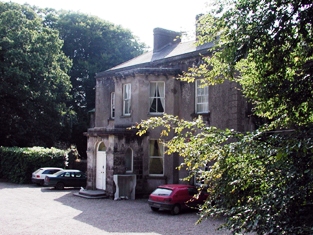
|
| Bay View (Dungarvan) | Richard Hamilton Lowe was leasing this property from the Barron estate at the time of Griffith's Valuation when it was valued at £28.It was also noted as his seat by Lewis in 1837. It is no longer extant. | |
| Tournore House | In 1851, Beresford Boate was leasing this property from George Boate when it was valued at £18. Lewis refers to it as the seat of B. Boate in 1837. A house is still extant at the site though extensive modern development has taken place in the area. |
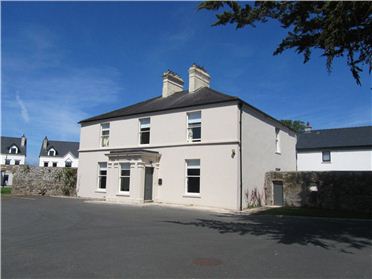
|
| Shandon House | In 1851 James Broderick was leasing a property valued at £10 at Shandon, parish of Dungarvan. In 1774 Smith noted Shandon House as "formerly having been a seat of the Hore family, now falling into decay". It is no longer extant. | |
| Coumahon | Col. Palliser was leasing this property to Patrick Stack in 1851 when it was valued at almost £10. A house still exists at the site. | |
| Furraleigh | Col. Palliser held this property in fee at the time of Griffith's Valuation, when it was valued at £34. In 1906 it was owned by Caroline G. Fairholme and valued at £44. | |
| Kilnagrange Mills | In 1851 Pierce Barron was leasing this property which included Kilnagrange Mills to Mrs. Catherine Dunn. It was valued at £14. Now the site of Flahavans oat milling company. | |
| Georgestown House | Held in fee by James Barron at the time of Griffith's Valuation, when it was valued at £22. Lewis refers to it as the seat of J. Barron in 1837. In the 1870s it was the seat of John M. Barron. The house was offered for sale as part of the Georgestown estate in April 1885 on behalf of Pierse John Barron, a minor. The sale notice describes it as "a two-storey residence in the owner's possession". It was later owned by the Beresford family. In more recent times it was the centre of a stud farm and in 2010 was offered for sale. |
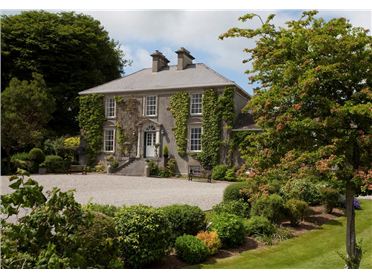
|
| Gardenmorris | Held in fee by John P. O'Shea at the time of Griffith's Valuation, when it was valued at £56. It was also noted by Lewis as his residence in 1837. Smith referred to it as the house of Mr. Richard Power in 1774. Noted by Slater as the residence of Nicholas Power O'Shee in 1894 and owned by Richard P. O'Shee and valued at £57 in 1906. The house was totally reconstructed following its burning during the Civil War in 1922. The ITA survey in 1942 noted that most of the library and works of art in the house were destroyed at that time. It is still extant and occupied. |

|
| Kilrossanty Mill | In 1851, Mrs. Mary Callaghan was leasing this property, which included a corn mill, from Sir Edward Kennedy's estate when it was valued at £11 10s. The mill building is still extant. |
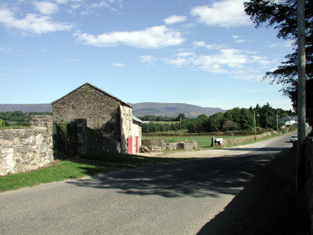
|
| Carrigmoorna House | In 1851 Thomas P. Sherlock held this property from Sir Edward Kennedy's estate when it was valued at £16. On the 25-inch Ordnance Survey map of the 1890s it is named Carrigmoorna House. A modern house appears to occupy the site. |
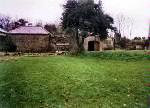
|
| Comeragh House | At the time of Griffith's Valuation, Col. Wray Palliser was leasing this property from Phineas Hunt, when it was valued at £28. It is recorded as the address of John Palliser in the 1870s. Though badly damaged by fire in 1923, Comeragh house was restored and is still extant. The ITA survey of 1942 noted it was in the ownership of Captain Fairholme at that time. It was offered for sale in 2010. |
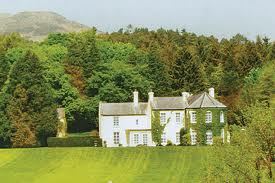
|
| Briska House | Leased by Robert Acheson from Col. Palliser in 1851 when it was valued at £11. On the 25-inch Ordnance Survey map of the 1890s it is named Briska House. A house is still extant at the site. | |
| Glenview {?}/Comeragh-house B | In 1851, Rev. William Ardagh was leasing a property adjacent to Comeragh House from the Palliser estate when it was valued at almost £10. A house and farm buildings are still extant at the site. Walford gives Rev. Ardagh's address as Glenview which may refer to this house. | |
| Mount Kennedy | At the time of Griffith's Valuation, John Power was leasing this property from Margaret Power when it was valued at £13 10s. It is still extant and occupied. |
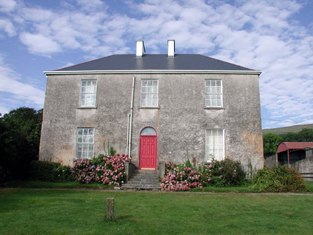
|
| Comeragh Lodge | Thomas Hunt was leasing this property from Col. Palliser's estate in 1851, when it was valued at £14. It is still extant and occupied. |
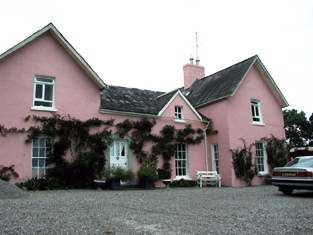
|
| Ballygagin | At the time of Griffith's Valuation, Thomas Garde was leasing this property to John Slattery when it was valued at £15. Earlier, in 1786, Wilson refers to it as the seat of Mr. Giles. There is still an extant house at the site. | |
| Ballynamuck House | At the time of Griffith's Valuation, Mrs. Eleanor Hearne was leasing this property to Patrick McCarthy when it was valued at £10 10s. In 1814 Leet notes it as the residence of Miss McGrath. Farm buildings now occupy the site. | |
| Lisfennel House | In 1851 John Keily was leasing Lisfennel to Beverley Keily when it was valued at £12 10s. Though there are buildings at the site it is not named on the 6-inch Ordnance Survey Map but is labelled Lisfennel House on the 25-inch map of the 1890s. It was owned by Mrs. Susan Keily in 1906. when the house was valued at £14 10s and other buildings were valued at £6. There is still a house at the site. | |
| Springmount (Dungarvan) | At the time of Griffith's Valuation, George Keily was leasing this property from John Keily when it was valued at £13 10s. In 1837 Lewis had referred to it as the seat of T.E. Kelly. Extensive modern building has taken place at the site. | |
| Mountain Castle | In 1851 James O'Keeffe was leasing this property from the Chearnley estate when it was valued at £17 10s. An 1834 document in the National Library of Ireland suggests it was formerly in the possession of the Barron family The property is still extant. |

|
| Scart Cottage | Thomas Hely was leasing this property from Christopher Griffith in 1851, when it was valued at almost £8. A house still exists at this site. | |
| Mountpatrick | Rev. James Veale was leasing from the Power O'Shee estate in 1851 when it was valued at £12. It is still extant and occupied. |
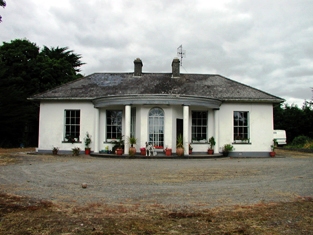
|
| Scrahan | At the time of Griffith's Valuation, Thomas Shanahan was leasing this property from the Marquis of Waterford's estate when it was valued at £14 10s. An extensive farm complex exists at the site. | |
| Whitestown House (Kilmacthomas) | In 1851, Stephen Moore was leasing this property from the Marquis of Waterford, when it was valued at almost £10. It is still extant and occupied. |
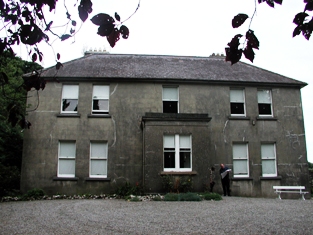
|
| Carrickahilla Presbytery | Rev. Michael Power, PP, was leasing this property from the Barron estate in 1851 when it was valued at £12. It is labelled Presbytery on the 25-inch Ordnance Survey map of the 1890s. There is still a house extant at this site. | |
| Carrickbarrahane House | James R. Smyth was leasimg this property from the trustees of Mrs. Osborne in 1851 when it was valued at £23. The National Inventory of Architectural Heritage suggests it was built c.1820. It is still extant. | |
| Carrickanna | At the time of Griffith's Valuation, Phineas Hunt was leasing this property from Robert Uniacke, when it was valued at £11. It is labelled Carrickanna on both the First and 25-inch edition Ordnance Survey Maps. The original house is no longer extant. | |
| Stradbally Rectory | Rev. George T. Roche was leasing this property from the Uniacke estate at the time of Griffith's Valuation, when it was valued at £20. The house is still extant. |
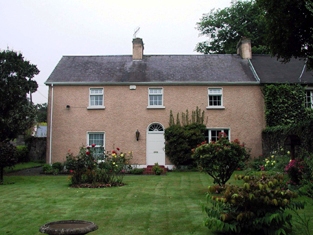
|
| Woodhouse (Stradbally) | Robert Uniacke held this property in fee at the time of Griffith's Valuation, when it was valued at £52 10s. In 1894 Slater refers to it as the seat of Robert H. Beresford. In 1906 it was the property of John Beresford and still valued at over £52. Smith referred to it in 1774 as the estate of Borr Uniake. Peacock notes that the Woodhouse estate was successively owned by Fitzgeralds (up to 1724), the Uniackes (until 1855) and after that the Beresfords. In 1942, the ITA survey notes that the owner of the house, Major Lord William Beresford was then resident in India. The house is still extant and well-maintained. It was sold in 2013. |

|
| Sarahville | In 1851 held in fee by Richard Barron when it was valued at £25. James Barron of Sarahville is named in the will of Pierce Barron, dated 1808. James' wife was Sarah Gee. There is still a house at this site. | |
| Cappagh House (Old) | Richard Ussher held this property in fee in 1851 when it was valued at £41. This is the original Cappagh House, built by the Ussher family in the late eighteenth century and referred to in 1774 by Smith as the seat of John Usher. It is still extant, though replaced, in the late nineteenth century, by the modern Cappagh House. |
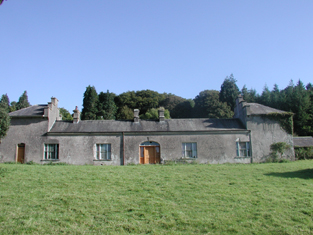
|
| Cappagh House | A house constructed in the later nineteenth century by Richard J. Ussher. In 1906 it was owned by him and valued at over £52. In 1942 the ITA survey notes it as the property of Percy Arnold Ussher. It is still extant and occupied. |
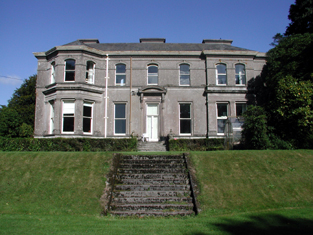
|
| Carriglea House | Built by John O'Dell in the early ninetenth century, in 1851 this property was held in fee by Edward O'Dell when it was valued at £59. On the 25-inch Ordnance Survey map of the 1890s it is labelled Carriglea Convent. It is still extant and a centre for care services. |

|
| Ballylemon Lodge | In 1906 Kathleen M. Walsh was the owner of this property, then valued at over £13. It had been built in the later nineteenth century and is shown on the 25-inch Ordnance Survey map of the 1890s. Local sources state that it was also the home of John O'Keeffe, MP for Dungarvan in the 1870s. An earlier property in the Ballylemon area was described by Smith in 1774 as "anciently the seat of Sir Richard Osborne". | |
| Ballynabanoge | Michael Power was leasing this property to Michael Lenehan at the time of Griffith's Valuation, when it was valued at £9. In 1906 it was the property of Patrick J. Power and valued at £8 10s. Modern buildings are present at the site. | |
| Glenview/Glenamara | This house is labelled on the 25-inch Ordnance Survey Map of the 1890s as Glenview. It is possibly the property leased by Rev. Thomas Drought from Frederick Carter at the time of Griffith's Valuation when it was valued at £14. It seems to have become known as Glenamara in the twentieth century during which time it came into the possession of the Spring-Rice family who offered it for sale in 2011. |

|
| Rossmore House | At the time of Griffith's Valuation, Benjamin Barton was the lessor of a property valued at over £13. He also held lands from the Marquis of Waterford's estate in the parish of Rossmore, barony of Decies without Drum. |

|
| Glenview (Stradbally) | At the time of Griffith's Valuation, Rev. Thomas Drought was leasing a property valued at £14 from Frederick Carter. This may be the house which afterwards became known as Glenview. It is still extant and well maintained. |

|
| Mountain View House (Dungarvan) | At the time of Griffith's Valuation, John Dower was leasing several substantial premises in the area of Fairlane, Dungarvan, from the estate of the Marquis of Waterford. Local sources suggest the Dower family built Mountain View House c.1815. The house remained in the Dower family until the twentieth century. In more recent time it offered guest accommodation and in 2014 was offered for sale. |
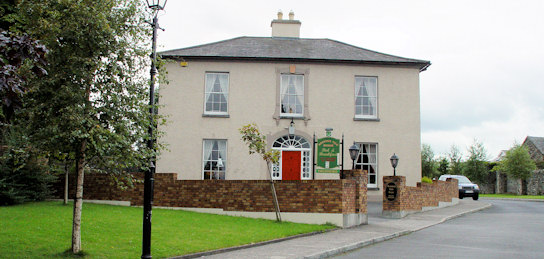
|

